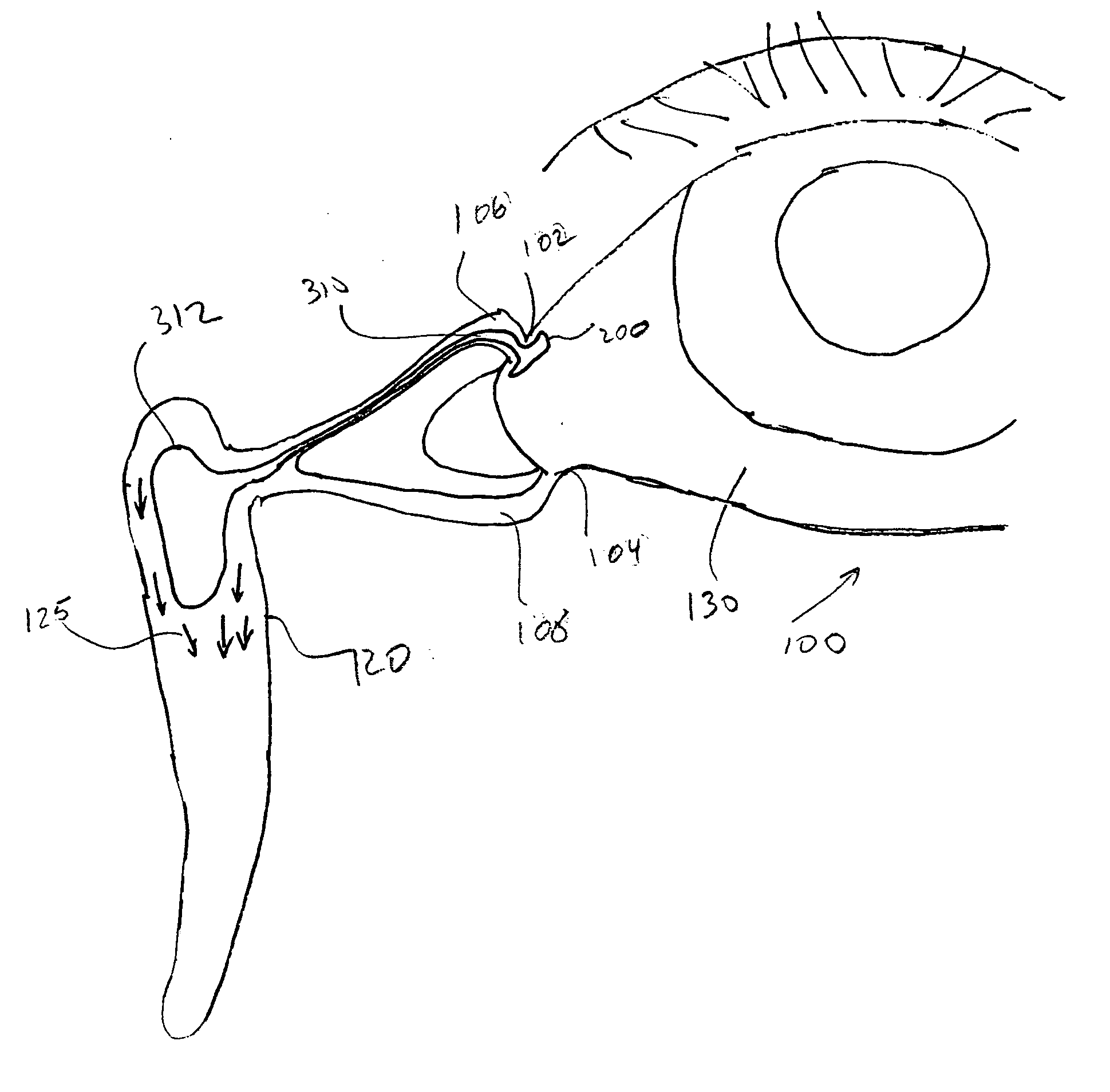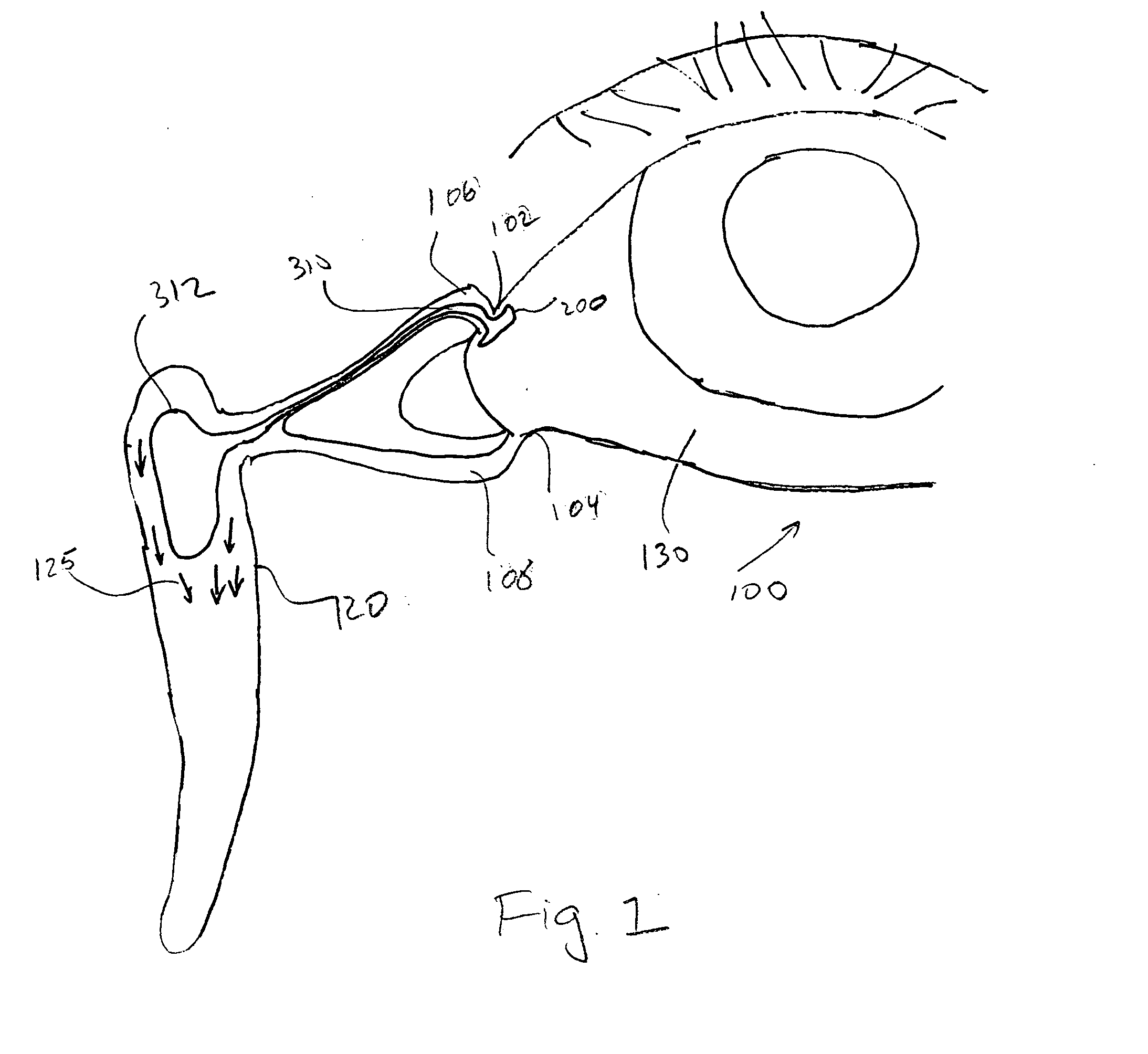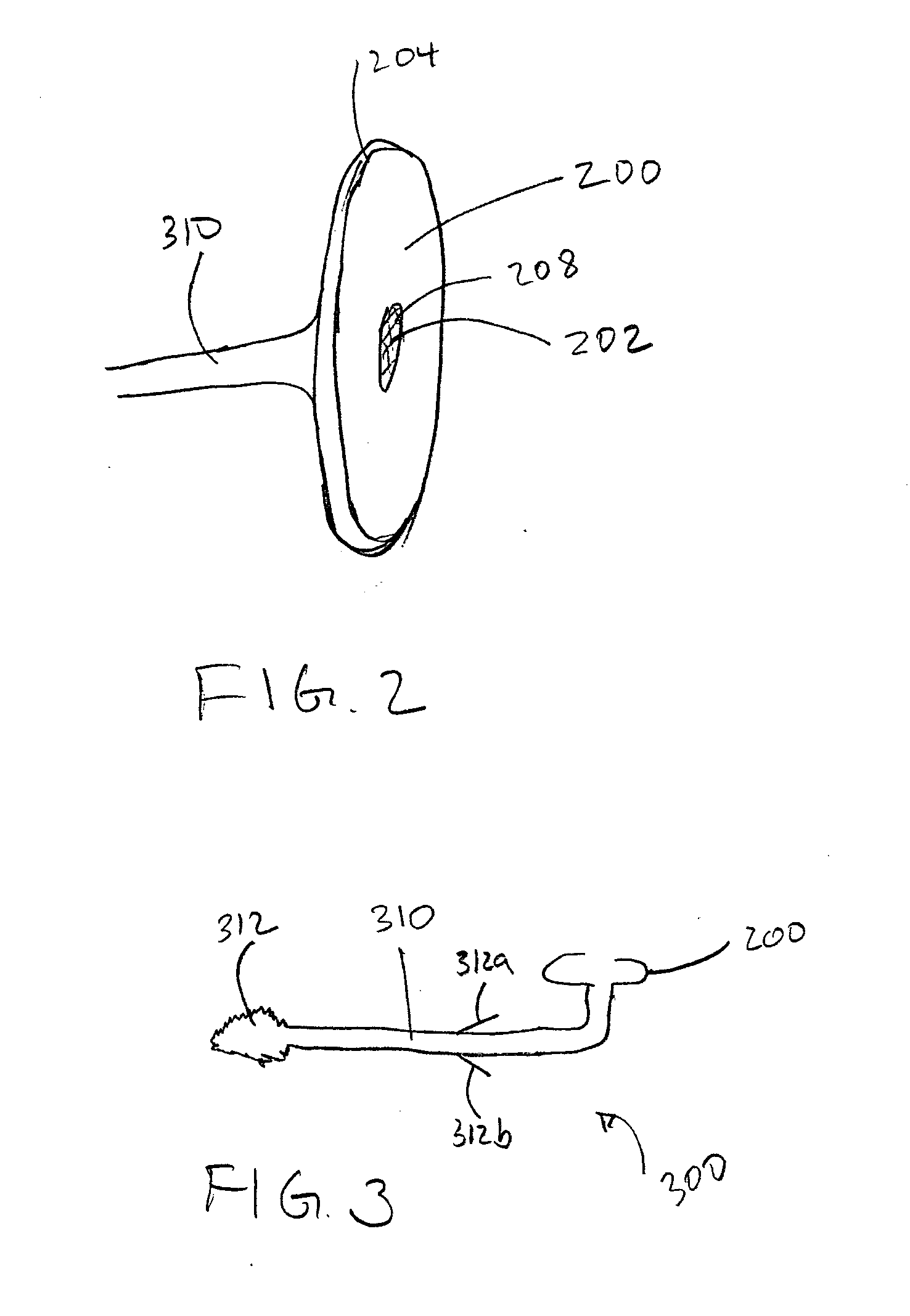Ophthalmic insert
a technology of ophthalmology and inserts, applied in the field of ophthalmology inserts, can solve the problems of inability to properly administer drops for themselves, inability to uniformly apply medication, and patients often forget to use medication
- Summary
- Abstract
- Description
- Claims
- Application Information
AI Technical Summary
Benefits of technology
Problems solved by technology
Method used
Image
Examples
Embodiment Construction
[0013]There are many different pathologies and conditions that require the use of ophthalmic medications in the form of eye drops. Some of the most common conditions include infections, glaucoma, and “dry eye syndrome.” There are, correspondingly, many different types of medications for these conditions that require frequent administration. Often, however, patient compliance is problematic, so much so that it can render medication ineffective. Also, for various technical reasons, many patients, especially the elderly, have difficulty administering eye drops.
[0014]FIG. 1 depicts a general view of the anatomy of an eye 100, including upper and lower puncta 102, 104 each forming an opening to a canaliculus 106, 108 that respectively lead to the nasal lacrimal sac 120. As is well known, fluid (e.g., tears) on the eye may be drawn through puncta 102, 104 and drain into the nasal lacrimal sac 120 as shown by reference numeral 125.
[0015]Also shown in FIG. 1, and also now with reference to ...
PUM
 Login to View More
Login to View More Abstract
Description
Claims
Application Information
 Login to View More
Login to View More - R&D
- Intellectual Property
- Life Sciences
- Materials
- Tech Scout
- Unparalleled Data Quality
- Higher Quality Content
- 60% Fewer Hallucinations
Browse by: Latest US Patents, China's latest patents, Technical Efficacy Thesaurus, Application Domain, Technology Topic, Popular Technical Reports.
© 2025 PatSnap. All rights reserved.Legal|Privacy policy|Modern Slavery Act Transparency Statement|Sitemap|About US| Contact US: help@patsnap.com



